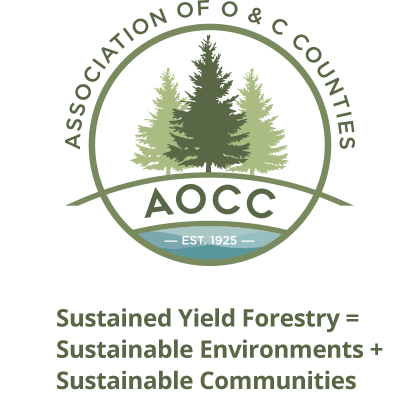The 1995 Resource Management Plans (RMPs) for the 6 western Oregon BLM Districts were based on the Land Use Allocations and Management Direction from the Northwest Forest Plan (NWFP). The RMPs initially declared an Allowable Sale Quantity (ASQ) of 211 million board feet (MMBF) on a sustainable basis and made no estimation of the short-term volume potential from the reserves.
The declared ASQ was based on a 608,000 acre harvest land base, 27 percent of the BLM forest, being fully available for sustained yield management. The declared ASQ was based upon the assumption that 85 percent of the volume would come from regeneration harvest in mature forest generally over age 80. The remaining 15 percent was assumed to come from intermediate thinning of younger forest.
In 1999 the RMPs were formally evaluated and the ASQ was reduced to 203 MMBF due to updated information on the harvest land base in the Eugene and Coos Bay Districts. Implementation during the first three years of the plan reflected a ramp up period and was below the declared ASQ. The mix of regeneration harvest and thinning was generally consistent with the RMP assumptions for the ASQ. The RMPs were formally evaluated again in 2004 and 2011. Both evaluations found that:
These departures included:
- No District achieved the declared ASQ.
- Regeneration harvest volumes were less than 20 percent of the assumed levels.
- Thinning harvest volumes were 2-7 times higher than the assumed levels in all Districts except for Medford and Klamath Falls.
- The harvest acreage in Medford and Klamath were over 50 percent higher than assumed levels.
The 2011 evaluation cited circumstances which lead to these departures:
- 2008 designation of spotted owl critical habitat, which reduced the harvest land base for sustained yield management.
- Management of Survey & Manage sites in the Harvest Land Base was not considered in the determination of the ASQ.
- Discovery of new Marbled Murrelet sites reduced the Harvest Land Base and created new reserves.
- BLM avoided harvest within spotted owl home ranges to facilitate moving timber sale projects through the consultation process with the regulatory agencies, primarily U.S. Fish & Wildlife Service. This practice was a de facto reduction to the harvest land base.
- Avoidance was also employed by BLM in areas with anticipated marbled murrelet sites and Survey & Manage species.
- BLM avoided regeneration harvest of older forest that was authorized by the RMPs.
The 2011 Evaluation concluded:
After the 2004 evaluation BLM initiated the Western Oregon Plan Revision, which evaluated a very wide range of sustained yield management approaches. The 2008 Record of Decision allocated 45 percent of the O&C forest to sustained yield management and declared an ASQ of 502 MMBF. The 2008 RMPs were withdrawn early in 2009, restored briefly, and then permanently withdrawn in 2011.
BLM’s recent management of the O&C Forest – Conclusions:
- BLM never implemented the sustained yield strategy of the 1995 or the 2008 RMPs.
- BLM management practices of largely thinning only are not consistent with principles of sustained yield and cannot be sustained.
- BLM’s implementation has never met the declared ASQ levels under the NWFP. BLM has established annual budgetary timber targets that roughly approximate the declared ASQ. For budgetary purposes BLM has counted volume from the reserves in addition to the ASQ volume as a measure of implementation performance.
- Allocation of only 27 percent of the forest under the 1995 RMPs and 20 percent under the 2016 RMPs falls far short of the O&C Act requirement that all timber lands be managed under the principles of sustained yield.
- BLM has failed to implement a sustained yield strategy to produce the minimum 500 MMBF as required by the O&C Act.

